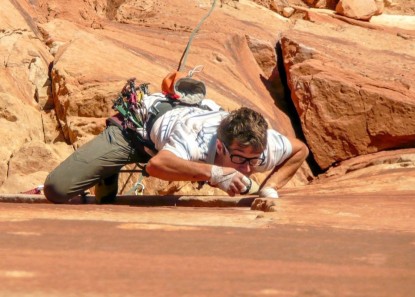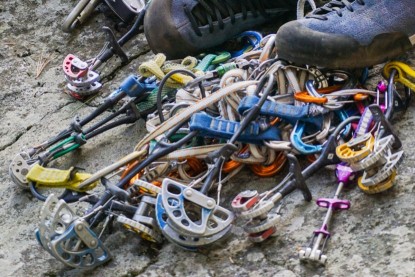Metolius Ultralight TCU Review
Our Verdict
Our Analysis and Test Results
Likes
This cam used to be called the Metolius TCU. They then found a way to lighten the fitting at the axle which they now call: Direct Axle Technology (DAT). This reduced the weight of the cam by 27-33% depending on the cam size. That is the only main change to design of the TCU from the old TCU. As a small change, Metolius now uses a Nylon and Dyneema mix for the sling instead of old 100% nylon sling.
This is the lightest cam we tested and maybe the lightest camming device currently made. If you combine these with the Metolius FS Mini carabiners or CAMP Nano 22, you will have the lightest possible climbing rack.
Metolius Climbing color codes its cams to help you gauge the quality of a placement. They call it the Range Finder system. The green dots against the rock mean a bombproof placement. If the yellow or red dots are touching, it's not. This is very useful for beginning leaders. I didn't find I used it much but it is a good reminder about optimal cam placement.
While this is not my favorite climbing cam for aid, one advantage it does have is a high clip-in point. This means that you get about an inch more reach than with other camming devices.
Dislikes
The head width is so wide it does not work nearly as well in shallow pin scars as the Metolius Master Cam or CCH Alien. Also, the stem does not bend as well as a single-stem cam. When used for big walls, the lack of flexibility means the cam will not hold as well and seem to walk more. Also, if you bounce test it in certain positions it bends the cables, which throws off the alignment of the two cables and makes them difficult to retract. In bottomless cracks this cam works great, but in the awkward scars and pods you find in Yosemite or Zion, it does not work as well. Also, with only three cams, this device tends to walk more than four-cam units.
Best Application
This is best suited for alpine climbs and anywhere with a big approach where every ounce counts. It is ideal in clean-cut cracks you find in alpine granite or splitter cracks in sandstone. It is not as good for flaring pin scars. For those placements a single-stem unit like the Metolius Master Cam works better.
Value
These are among the least expensive cams on the market. Considering how long mine have held up, they are a great value. That said, they are not that much less expensive than the Metolius Master Cams which scored much higher in our tests.




